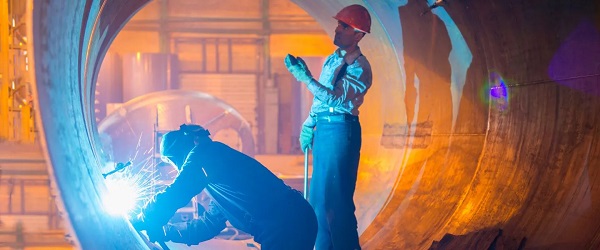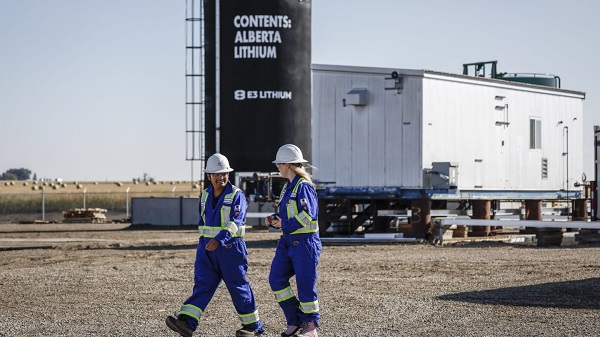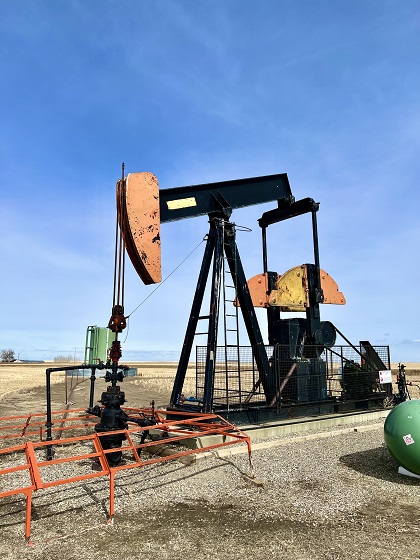Energy
Ottawa must eliminate harmful regulations to spur private investment in pipelines

From the Fraser Institute
By Julio Mejía and Elmira Aliakbari
The Carney government recently revealed the first five major development projects it deems to be in the “national interest” for fast-tracked assessment and approval. The list includes a liquified natural gas plant expansion in Kitimat, British Columbia, a small modular reactor in Ontario, upgrades to the Port of Montreal, a copper mine in Saskatchewan, and the Red Chris Mine in B.C. But notably, no new oil pipelines made the list. While the government attributes this absence to a lack of private-sector proponents, this reasoning is disingenuous and overlooks how Canada’s regulatory regime creates uncertainty and deters investment in the energy sector.
For context, most of Canada’s energy is produced in the Prairies. Building pipelines to coastal terminals is key to increase access to global markets for oil and natural gas, which are our top exports. In 2024, nearly 96 per cent of oil exports and almost all natural gas exports were headed to a single trading partner, the United States.
In the wake of Trump’s tariffs against Canadian exports, Carney pledged to cut red tape and accelerate major project approvals to diversify our trade. But his government has repealed none of the regulations that create uncertainty, raise compliance costs and deter investment in the energy sector.
Instead, the government introduced Bill C-5, granting cabinet discretionary power to decide which projects undergo full regulatory assessments and which get fast-tracked, based on their perceived contribution to the “national interest.” So rather than providing predictable rules for all entrepreneurs and businesses, Ottawa created an opaque process where companies must lobby cabinet to prove their projects meet subjective criteria to circumvent the laws and regulations that apply to everyone else. This creates more uncertainty, not less.
Meanwhile, the regulatory barriers that discourage private-sector investment in the energy sector remain firmly in place. Take Bill C-69, which introduced vague criteria into the evaluation of major energy projects including the impact on the “intersection of sex and gender with other identity factors,” leading the legislation to be commonly known as the “no-more pipelines bill.”
Other regulations are similarly designed to reduce the demand for new pipelines either by restricting the use of coastal ports or forcing a curtailment of oil and gas production. Bill C-48, for instance, limits Canadian exports to Asia by banning large oil tankers from B.C.’s northern coast. And the 2023 methane emissions regulations targeting the oil and gas sector impose costs of more than $100 million to the industry, likely leading to reduced production.
Moreover, last year, Ottawa proposed to cap greenhouse gas (GHG) emissions exclusively for the oil and gas sector. Multiple studies from independent organizations indicate this emissions cap will effectively force a reduction in oil and gas production, consequently undermining the case for private investment in more pipelines. If our energy sector is forced to produce less, it’s not clear why more pipelines would be required.
Not surprisingly, Canada has gained a negative reputation for its regulatory barriers. According to a 2023 survey of oil and gas investors, 68 per cent of respondents said uncertainty over environmental regulations deterred investment in Canada. And 59 per cent said the cost of regulatory compliance deterred investment.
These investor concerns reflect a sharp decline in actual investment. Between 2014 and 2023, investment in the energy sector fell from $84.0 billion to $37.2 billion (inflation-adjusted), a drop of 56 per cent.
Rather than relying on a closed-door process where government picks winners and losers, the federal government should establish a transparent and competitive regulatory framework to attract investment. If the Carney government is serious about encouraging private proponents to build pipelines, diversifying exports and unlocking Canada’s potential as a global energy leader, it must eliminate the regulatory hurdles plaguing the energy sector.
Alberta
Alberta’s E3 Lithium delivers first battery-grade lithium carbonate

E3 Lithium employees walk through the company’s lithium pilot plant near Olds
From the Canadian Energy Centre
E3 Lithium milestone advances critical mineral for batteries and electrification
A new Alberta facility has produced its first battery-grade lithium carbonate, showcasing a technology that could unlock Canada’s largest resources of a critical mineral powering the evolving energy landscape.
In an unassuming quonset hut in a field near Olds, Calgary-based E3 Lithium’s demonstration plant uses technology to extract lithium from an ocean of “brine water” that has sat under Alberta’s landscape along with oil and gas for millions of years.
Lithium is one of six critical minerals the Government of Canada has prioritized for their potential to spur economic growth and their necessity as inputs for important products.
“The use for lithium is now mainly in batteries,” said E3 Lithium CEO Chris Doornbos.
“Everything we use in our daily lives that has a battery is now lithium ion: computers, phones, scooters, cars, battery storage, power walls in your house.”
Doornbos sees E3 as a new frontier in energy and mineral exploration in Alberta, using a resource that has long been there, sharing the geologic space with oil and gas.
“[Historically], oil and water came out together, and they separated the oil from the water,” he said.
“We don’t have oil. We take the lithium out of the water and put the water back.”
Lithium adds to Canada’s natural resource strength — the country’s reserves rank sixth in the world, according to Natural Resources Canada.
About 40 per cent of these reserves are in Alberta’s Bashaw District, home to the historic Leduc oilfield, where E3 built its new demonstration facility.
“It’s all in our Devonian rocks,” Doonbos said. “The Devonian Stack is a carbonate reef complex that would have looked like the Great Barrier Reef 400 million years ago. That’s where the lithium is.”
Funded in part by the Government of Canada and the Government of Alberta via Alberta Innovates and Emissions Reduction Alberta (ERA), the project aims to demonstrate that the Alberta reserve of lithium can be extracted and commercialized for battery production around the world.
E3 announced it had produced battery-grade lithium carbonate just over two weeks after commissioning began in early September.
In a statement, ERA celebrated the milestone of the opening of the facility as Alberta and Canada seek to find their place in the global race for more lithium as demand for the mineral increases.
“By supporting the first extraction facility in Olds, we’re helping reduce innovation risk, generate critical data, and pave the way for a commercial-scale lithium production right here in Alberta,” ERA said.
“The success from this significant project helps position Alberta as a global player in the critical minerals supply chain, driving the global electrification revolution with locally sourced lithium.”
With the first phase of the demonstration facility up and running, E3 has received regulatory permits to proceed with a second phase that involves drilling a production and injection well to confirm brine flow rates and reservoir characteristics. This will support designs for a full-scale commercial facility.
Lithium has been highlighted by the Alberta Energy Regulator (AER) as an emerging resource in the province.
The AER projects Alberta’s lithium output will grow from zero in 2024 to 12,300 tonnes by 2030 and nearly 15,000 tonnes by 2034. E3 believes it will beat these timeframes with the right access to project financing.
E3 has been able to leverage Alberta’s regulatory framework around the drilling of wells to expand into extraction of lithium brine.
“The regulator understands intimately what we are doing,” Doornbos said.
“They permit these types of wells and this type of operation every day. That’s a huge advantage to Alberta.”
Energy
Nuclear power outperforms renewables every time

This article supplied by Troy Media.
Wind and solar work in small niches, but nuclear remains the only reliable, cost-effective choice for large-scale electricity
Last month, Prime Minister Mark Carney unveiled a shortlist of major Canadian infrastructure projects. At the top: a small modular reactor (SMR) at Ontario’s Darlington nuclear site. Designed to power 300,000 homes, the project may make Canada the first G7 nation with operational SMRs —and it marks a quiet turning point in the clean energy debate.
It’s a timely reminder that while wind and solar dominate headlines, nuclear remains the only scalable low-emissions solution ready to anchor the grid.
As someone who spent decades working on 13 nuclear reactor projects across Canada and abroad—and 40 years living off-grid on a sailboat powered by solar panels and microturbines—I support renewables for small-scale use. But based on professional and personal experience, I can say confidently that nuclear is the better fit for our large-scale energy needs.
Many renewable advocates compare technologies using nameplate capacity—maximum output under ideal conditions. But what matters is how much electricity each generator actually delivers under real-world conditions, especially in places like Alberta.
A typical Canadian home consumes about 35 kilowatt hours of electricity annually. A 100- megawatt nuclear plant operating year-round produces 876 million kWh per year. In comparison, wind farms in Alberta operate at about 32 per cent efficiency, delivering only 280 million kWh per year. Solar farms fare worse, averaging just 17 per cent efficiency annually, with output dropping close to zero in the winter. A 100 MW solar farm produces around 149 million kWh per year. While performance
may vary in other regions, the broader issues—intermittency and short lifespans—remain consistent.
Lifespan is a critical factor. A nuclear plant, with refurbishment, can last around 60 years. Wind turbines and solar panels typically last about 20 years and degrade by two to three per cent each year. Unlike nuclear, they can’t be economically refurbished. That means triple the renewable infrastructure is required over time to deliver the same output.
Measured over their full lifecycle, nuclear plants produce electricity more cost-effectively than many assume. High up-front costs and long construction periods can inflate financing charges, but modular construction of SMRs—factory-built in sections and assembled on site—will cut those interest costs significantly. Ontario’s older CANDU reactors already deliver electricity at 10.1 cents per kilowatt hour—less than natural gas (11.3), wind (15.4), or solar (50.2), and only slightly higher than hydro (6.1). These figures exclude subsidies.
Modern SMRs also address concerns around radioactive waste. Some designs use thorium, a safer alternative to uranium that doesn’t produce long-lived waste. Others recycle spent uranium fuel repeatedly until it’s depleted. Moltex Energy, based in New Brunswick, is developing technology to recycle spent CANDU fuel until it is fully depleted. In time, we may no longer need to store used fuel at all.
SMRs also offer safety and deployment advantages. Many rely on passive controls and require no on-site operators. They’re compact enough to be delivered by truck, avoiding years-long construction delays and enabling faster integration into the grid.
Wind and solar remain fundamentally intermittent. That’s because electricity grids require a constant, stable supply. If the wind dies down or clouds roll in, another source must take over immediately to prevent blackouts. This need for backup—usually with natural gas turbines—means double the infrastructure and double the cost.
The market is responding to the failure of renewables to deliver reliable power. Countries investing in nuclear are thriving. Others—like Germany—face deindustrialization, with energy prices up to four times higher than before. According to online news outlet Brussels Morning, more than 1,100 renewable projects have been rejected in Europe. Investor confidence in renewables is slipping.
All of this points to a simple truth.
Renewables have their place—but not as the backbone of our electricity grid. For reliable, industrial-scale power that keeps homes, hospitals and industries running, only nuclear can deliver.
Cosmos Voutsinos is a retired engineer who has published multiple scientific papers that have garnered a total of 96 citations. He earned his Bachelor of Applied Science (BASc) at the University of Waterloo and his Master of Engineering (M.Eng) degree from McMaster University.
Troy Media empowers Canadian community news outlets by providing independent, insightful analysis and commentary. Our mission is to support local media in helping Canadians stay informed and engaged by delivering reliable content that strengthens community connections and deepens understanding across the country.
-

 National11 hours ago
National11 hours agoCanada’s birth rate plummets to an all-time low
-

 Agriculture1 day ago
Agriculture1 day agoCarney’s nation-building plan forgets food
-

 Fraser Institute1 day ago
Fraser Institute1 day agoAboriginal rights now more constitutionally powerful than any Charter right
-

 Alberta1 day ago
Alberta1 day agoAlberta puts pressure on the federal government’s euthanasia regime
-

 Business12 hours ago
Business12 hours agoElon Musk announces ‘Grokipedia’ project after Tucker Carlson highlights Wikipedia bias
-

 Crime10 hours ago
Crime10 hours agoPierre Poilievre says Christians may be ‘number one’ target of hate violence in Canada
-

 Red Deer1 day ago
Red Deer1 day agoThe City or Red Deer Financial Troubles: The Role of Good Governance, Effective Policies and Key Performance Metrics.
-

 Business1 day ago
Business1 day agoDemocracy Watch Drops a Bomb on Parliament Hill









